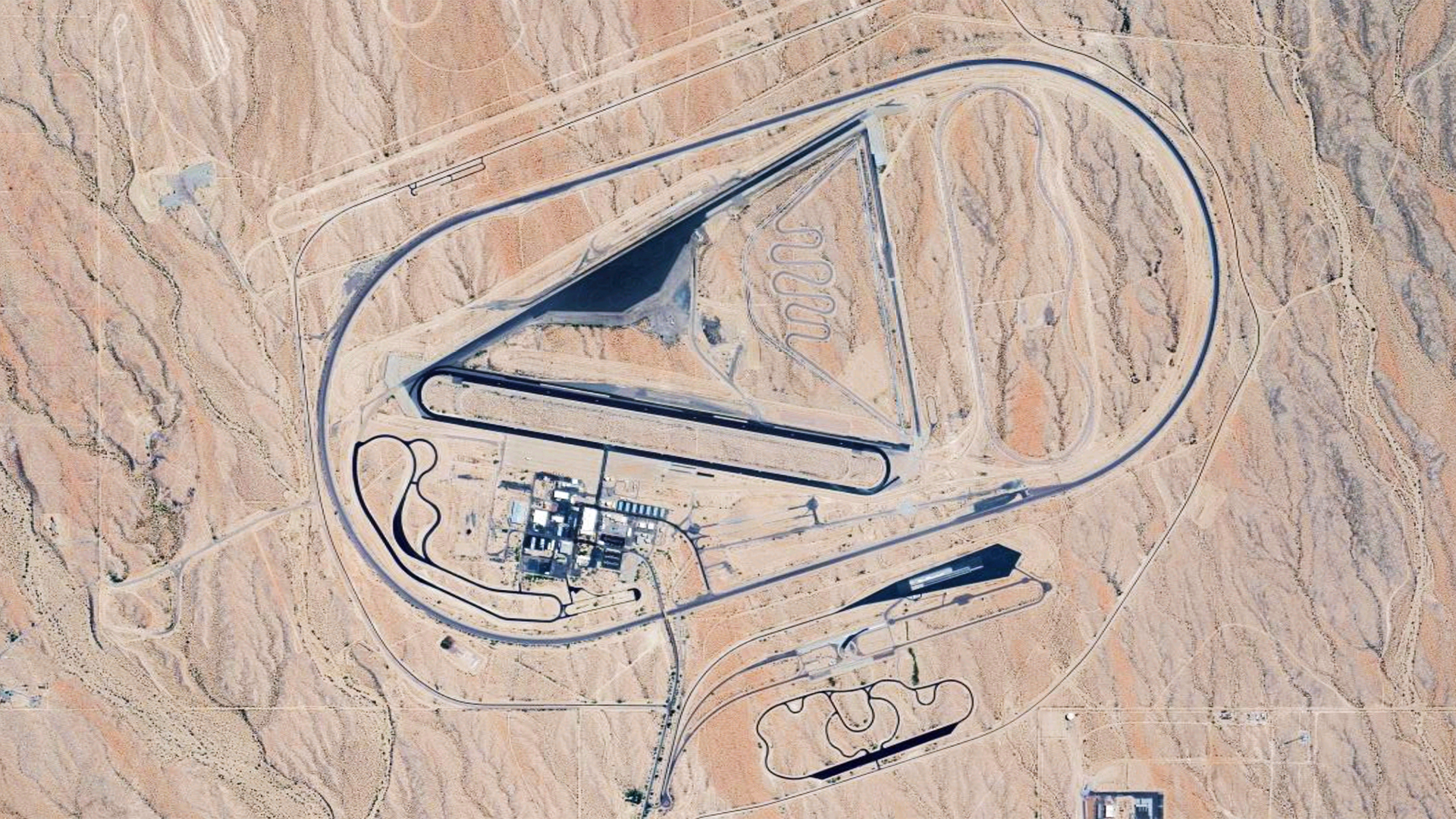

Everyone wants to save money, but automakers sure do things differently. On one end of the spectrum, you see Volkswagen Group saving millions by banning Porsche vehicles as corporate leases. On the other end, Stellantis opts to shut down an entire R&D facility.
First reported by CNBC, the Stellantis Arizona Proving Ground will close by the end of the year. Located in Yucca, Arizona, a middle-of-nowhere desert town between Las Vegas and Phoenix, the R&D facility is spread across 4,000 acres. The site has a long history of testing and training and, naturally, spy shots.
First used as a gunnery school and pilot training facility by the U.S. military, the location was sold to Ford in 1954. The Blue Oval Company expanded the testing site before the facility changed hands again in 2007. Then-Chrysler paid $35 million for the proving grounds, which include areas for pass-by-noise certification, NVH development, durability mileage accumulation tests, and an 18-acre section dedicated to vehicle dynamics. The Arizona proving grounds were instrumental in the development of performance vehicles, like the Ram 1500 TRX.
The Arizona facility currently employs 41 people, 37 of whom are represented by the United Auto Workers (UAW). According to CNBC, the autoworkers union had no comment on the closure. However, although the UAW and Stellantis currently have a rather tense relationship, the Arizona shutdown isn’t news to the labor union. The proving grounds, along with 17 other Stellantis locations, were discussed during last year’s contract negotiations.
Stellantis will not be leaving Arizona, though. Its hot-weather testing and other R&D operations will transfer to Toyota’s proving grounds in Wittman, an hour’s drive northwest of Phoenix. The facility is new (built in 2021) and larger (approximately 12,000 acres), but maintaining such a massive facility isn’t cheap, and Toyota is more than happy to share costs.
Stellantis CEO Carlos Tavares, who will be retiring in 2026, has been on a tear with regard to global cost-cutting measures. In the U.S., he’s reduced the headcount by 15.5 percent, or about 47,500 employees, since December 2019. And more layoffs are on the horizon.
A dwindling product portfolio also no longer includes the 300, Challenger, Cherokee, or Renegade for the U.S. market. Tavares has been dismissive of offers to buy out certain marques, instead giving brands a couple more years to shape up or ship out, specifically Chrysler and Maserati. But don’t hold your breath because Tavares has been known to backtrack on things, pushing timelines sooner rather than later.